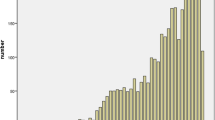Abstract
In psycholinguistics, there are mixed results regarding the processes humans decode meanings to reach a metaphorical reading. However, the experimental materials have not been examined systematically using lexical-semantic approach. In this study, the experimental materials were analyzed using the qualia structure. The results verified that qualia are important in creative meaning construction, and that the Agentive quale is the one that possibly initiates the “imaginative leap” to achieve the creative meaning. Also, this phenomenon is prominent neuropsychologically in people with better image ability.
Access this chapter
Tax calculation will be finalised at checkout
Purchases are for personal use only
Preview
Unable to display preview. Download preview PDF.
Similar content being viewed by others
References
Ahrens, K.: Mapping Principles for Conceptual Metaphors. Researching and Applying Metaphor in the Real World 26, 185 (2010)
Giora, R.: Understanding figurative and literal language: The graded salience hypothesis. Cognitive Linguistics 8, 183–206 (1997)
Glucksberg, S.: The psycholinguistics of metaphor. Trends in Cognitive Sciences 7(2), 92–96 (2003)
Grice, H.P.: Logic and conversation. In: Cole, P., Morgan, J.L. (eds.) Syntax and Semantics. Speech Acts, vol. 3, pp. 41–58. Seminar Press, New York (1975)
Hubbard, T.L.: The importance of a consideration of qualia to imagery and cognition. Consciousness and Cognition 5(3), 327–358 (1996)
Hoffman, R.R., Kemper, S.: What could reaction-time studies be telling us about metaphor comprehension? Metaphor and Symbol 2(3), 149–186 (1987)
Moravcsik, J.M.: Metaphor, creative understanding, and the generative lexicon. In: Bouillon, P., Busa, F. (eds.) The Language of Word Meaning. Cambridge University Press, New York (2001)
Lakoff, G., Johnson, M.: Metaphors we live by. University of Chicago Press (1980)
McElree, B., Nordlie, J.: Literal and figurative interpretations are computed in equal time. Psychonomic Bulletin & Review 6(3), 486–494 (1999)
Pustejovsky, J., Boguraev, B.: A richer characterization of dictionary entries: the role of knowledge representation. In: Atkins, B.T.S., Zampolli, A. (eds.) Computational Approaches to the Lexicon, pp. 295–311. Oxford University Press, Oxford (1994)
Searle, J.R.: Expression and meaning: Studies in the theory of speech acts. Cambridge University Press (1979)
Shen, Z.Y., Tsai, Y.T., Lee, C.L.: Joint influence of metaphor familiarity and mental imagery ability on action metaphor comprehension: An ERP study. Language and Linguistics 16(4), 615–637 (2015)
Glucksberg, S., Gildea, P., Bookin, H.B.: On understanding nonliteral speech: Can people ignore metaphors? Journal of Verbal Learning and Verbal Behavior 21(1), 85–98 (1982)
Author information
Authors and Affiliations
Corresponding author
Editor information
Editors and Affiliations
Rights and permissions
Copyright information
© 2015 Springer International Publishing Switzerland
About this paper
Cite this paper
Tsai, Y.T. (2015). Qualia Structure in Creative Metaphor. In: Lu, Q., Gao, H. (eds) Chinese Lexical Semantics. CLSW 2015. Lecture Notes in Computer Science(), vol 9332. Springer, Cham. https://doi.org/10.1007/978-3-319-27194-1_5
Download citation
DOI: https://doi.org/10.1007/978-3-319-27194-1_5
Published:
Publisher Name: Springer, Cham
Print ISBN: 978-3-319-27193-4
Online ISBN: 978-3-319-27194-1
eBook Packages: Computer ScienceComputer Science (R0)




